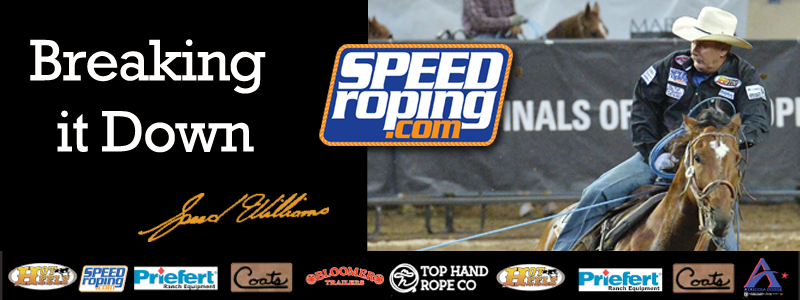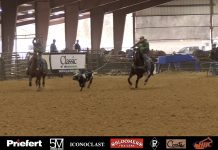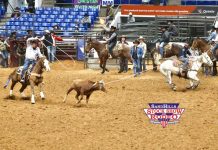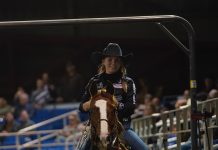The journey and the challenges of teaching my son to rope

When my son was very young we discovered he was unique in that his arms would not rotate. His elbows each are one bone, which keeps him from turning his palms to the sky. His thumbs can point upward, but his palms cannot. As a father it really upset me for a few months until one day when we took him to Cook’s Children’s Hospital for a checkup. Visiting that hospital was an eye opener as to what some children have to deal with. I left there feeling very fortunate and with a new outlook on my son’s condition. So far it has not affected his roping with the exception of trick roping and dallying can be difficult.
When he extends his arm forward, his pinky turns out a little. He has to keep his hand close to him when he dallies or it opens and his rope comes off the top of the horn. We’ve been watching video of his dallying, and he’s wrapping around the horn too wide, about three times the width of the horn. So, we’ve increased our drills on the Speed Trainer. He swings his rope, places it on the ground, pauses for three seconds to see where his left and right hands are and make sure his body position is correct. Then he comes up with his arm extended and pauses for three more seconds before trying to dally as fast as possible with his left hand out of the way to help with muscle memory.
He was moved to a #6 heeler this fall, not long after his 13th birthday. His heeling, his fundamentals, and horsemanship are all going in the correct direction. Right now, dallying is our biggest weakness. We’re missing the dallies too much, so focused on watching video to see why. Once we understood the why, it’s a little easier to fix.
Teaching him to rope has been easier than teaching horsemanship. Learning to read horses is a lot like learning to read people. If he’s not getting along with one of his horses, and I get on and in a matter of minutes they’re doing things correctly, then we need to work on his horsemanship. It’s important to learn patience and see if you’re the cause of the problem.
If you don’t have your body, or your left hand, in the right place, it’s very hard to overcome the mistakes you make with your feet and hands. Is your horse quartering off? Is your right leg in your horse’s side? Are your reins even? Are you sitting square in the saddle? Some of these mistakes can be subtle and difficult to recognize, especially during a live run. Horsemanship is very hard to teach and one of the main reasons I developed the Speed Trainer. I wanted my kids to learn horsemanship more efficiently and effectively than spending hours and hours in the arena.
I feel very fortunate to have the privilege to teach my son something I was very successful at. He is witty, highly intelligent, and keeps me on my toes. He doesn’t much like it when he asks a question about his roping and I respond with, “We’ll watch the video.” He wants an answer right away. One of the things I enjoy most about teaching is using video so my children or my clients can see what I see. It’s the little things that cause the final result. That’s how you get better – knowing why it’s happening and being able to change.
What’s new with me: This past Christmas we gave away a Speed Trainer. To enter the drawing, participants submitted videos of themselves roping on a Speed Trainer. We will do this again for Christmas this year. So, if you see a Speed Trainer somewhere, get someone to video you roping it – that’s all you have to do to be eligible to enter the drawing. Just submit the video. For more details visit speedroping.com.
The response from Speed Trainer customers has far exceeded my expectations. So many people are truly excited and happy they can actually break habits they have struggled with for years. It’s very gratifying to know the Speed Trainer is making such a difference for so many people. At home, we do our drills every day so we can correct the mistakes we see ourselves make on video.






